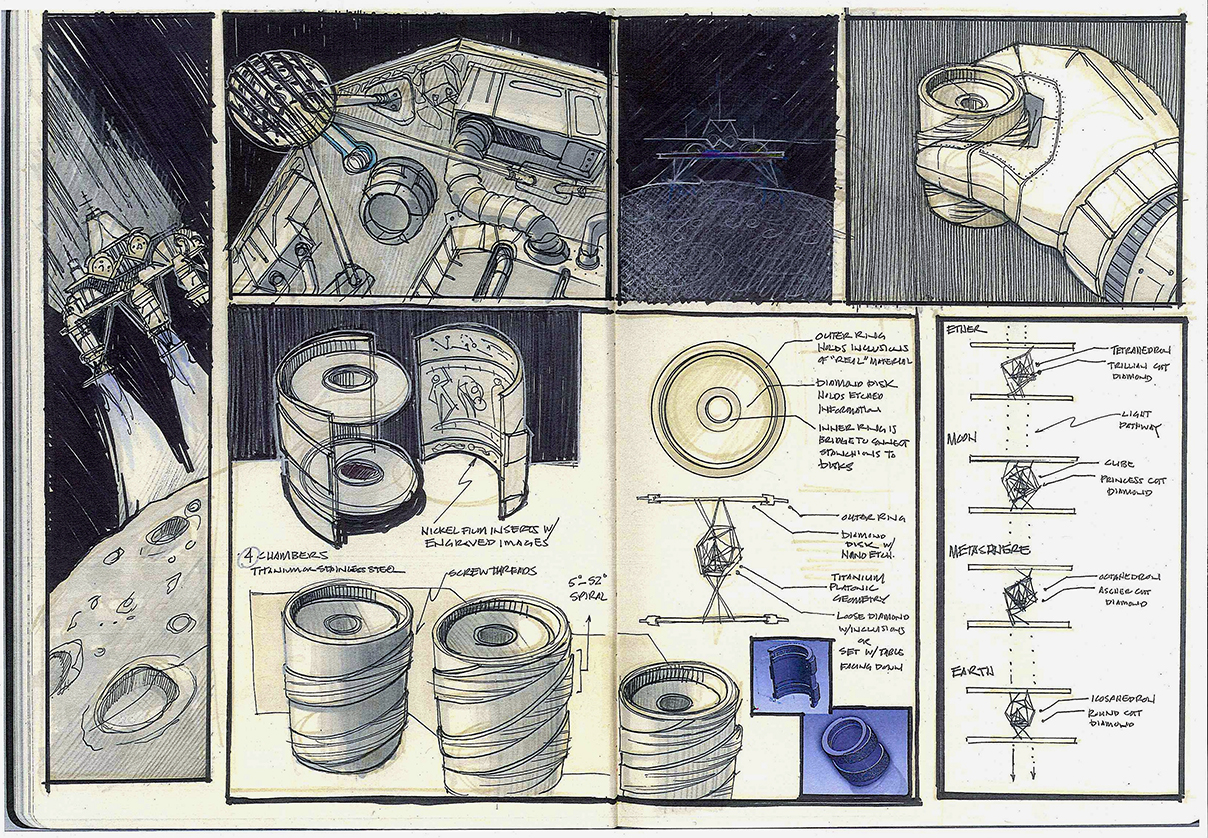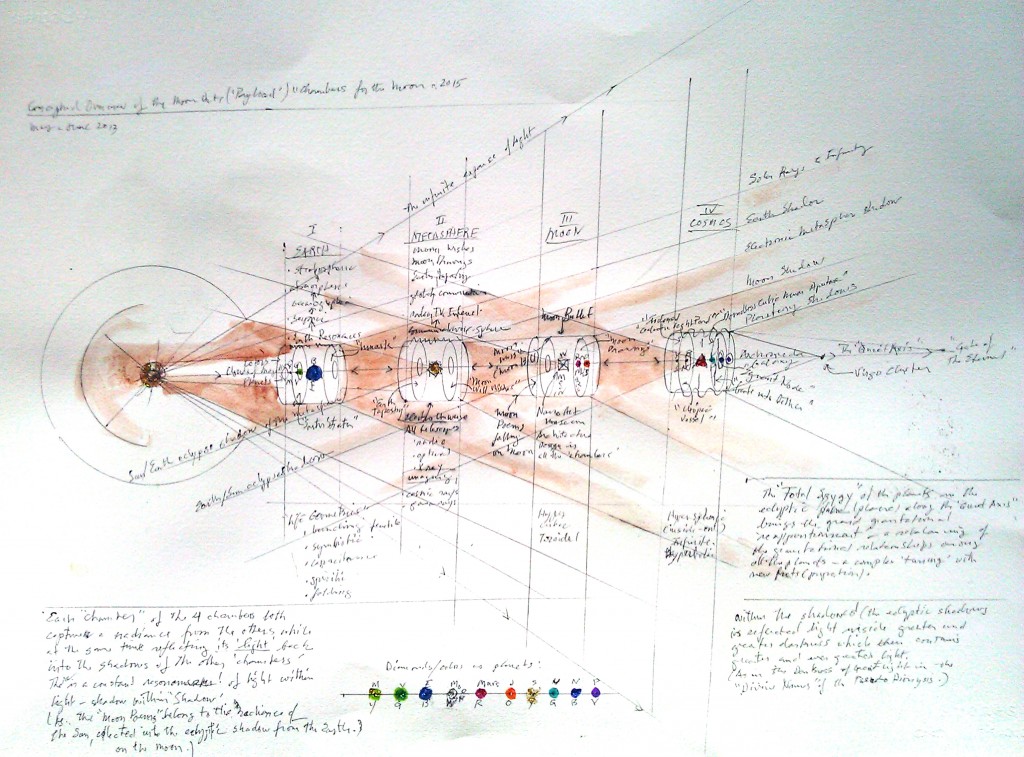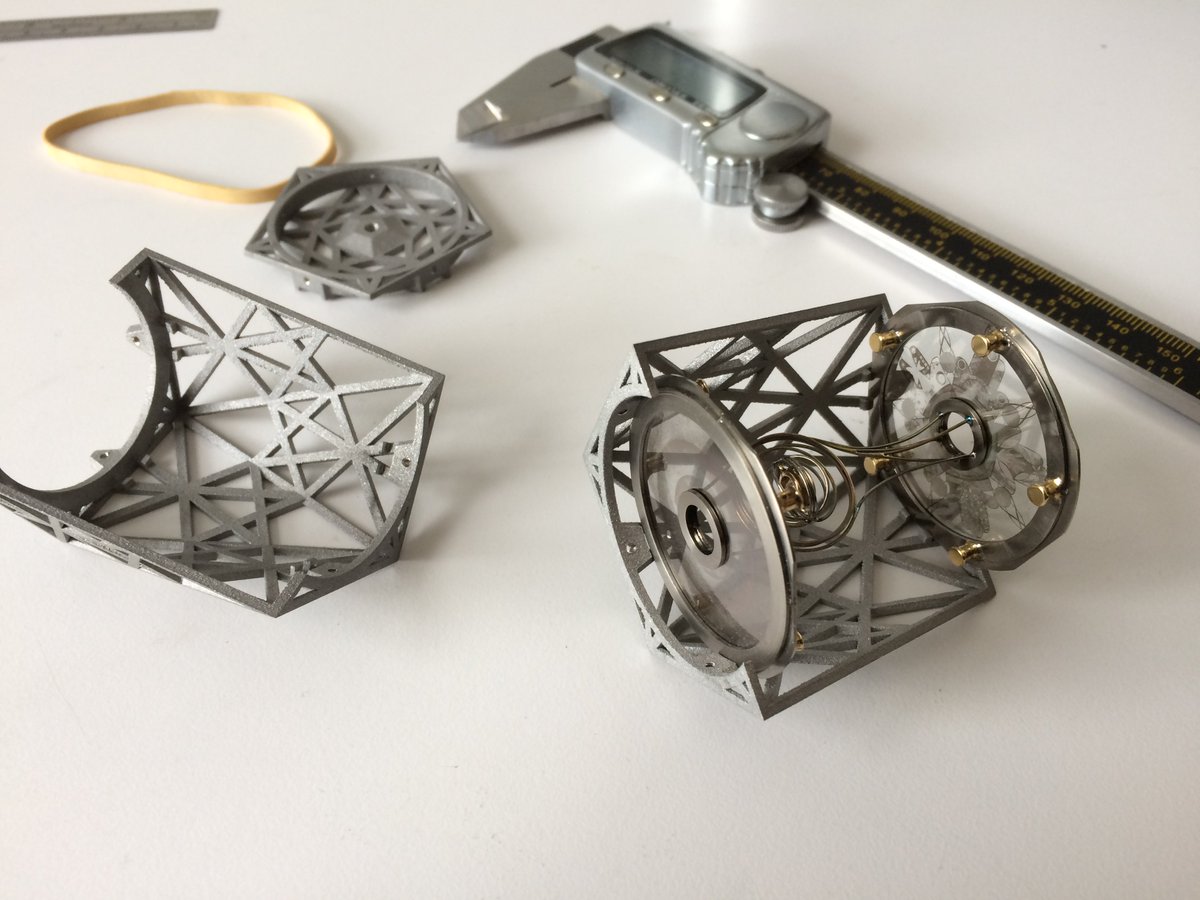About
An epochal artifact designed to communicate forward across time and space
At 2:18:38am on January 8, 2024 Carnegie Mellon University sent two significant payloads headed to the moon attached to Astrobotic’s Peregrine lander carried by United Launch Alliance’s Vulcan-Centaur launch vehicle. Our work, called “The MoonArk,” is a gift of life and hope to future humans embodied by all the arts, enlarging the lunar mission to ponder how the Moon stirs the tides, the growth patterns of life, the rhythms of society, and how the Moon always continues to pull us further into the heavens – a museum for the Moon! The project involved 18 universities and organizations, 60 team members, and over 250 contributing artists, designers, educators, scientists, engineers, choreographers, poets, writers and musicians.
MoonArk is a highly collaborative and massively integrated sculpture that poetically sparks wonderment through the integration of the arts, humanities, sciences, and technologies. Comprised of four independent 2”h x 2”dia chambers and weighing a combined total of 10 ounces, it contains hundreds of images, poems, music, nano-objects, mechanisms, and earthly samples intertwined through complex narratives that blur the boundaries between worlds seen and unseen. It is designed to direct our attention from the Earth outward, into the cosmos and beyond and reflect back to Earth as an endless dialogue that speaks to our context within the universe. Impossibly small, broadly diverse, hyper-light, yet incredibly enduring, the MoonArk is designed and engineered to last thousands of years to project humanity in a most beautiful and highly significant way.
Beginning as a concept in 2008, MoonArk was planned to become the most elaborate and complex cultural payload ever launched into space; aiming to raising critical discourse around the artifacts we leave behind for future humans to uncover in the very distant future. MoonArk is a creative and engineering marvel that instigated original innovation and invention of digital and analog fabrication techniques, ultra-high resolution imaging and many innovations in material science, technology, and the arts, engaging colleagues across the world in inspiring ways. Rigorous space-readiness testing prepared MoonArk for its journey where it would be exposed to extreme temperatures, solar radiation, and incredible vibration loads; yet capable to endure for thousands of years quietly waiting discovery on the lunar surface.
There are two identical MoonArks – twins in every respect. The moon-bound MoonArk spent 10 days in space exposed to the harshest temperature extremes and solar radiation reaching lunar distance (242,000 miles) and returning back to Earth in the South Pacific along the Tropic of Capricorn. In April 2022, after an extensive tour traveling internationally for exhibitions, festivals, and special presentations – aiming to engage people in ways to spark dialog and conversation – the Earth-bound MoonArk was accessioned into the permanent collection of the Smithsonian National Air and Space Museum where it remains for posterity.
For up to date project information please see our twitter page: www.twitter.com/CMU_MoonArk






